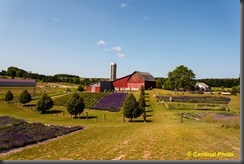Submitted by David Cardinal on Tue, 09/26/2017 - 12:21
I’ve had a Nikon D850 for a few weeks now, and been able to use it in a variety of situations, and with a variety of lenses. For the TL;DR crowd the short answer is that it’s an amazing camera and produces great images. In my case, I’m very happy to have upgraded from my (which I sold to recover about 1/2 the cost of the D850), although that upgrade isn’t for everyone, so let’s discusses the pros and cons.
Submitted by David Cardinal on Thu, 08/24/2017 - 08:30
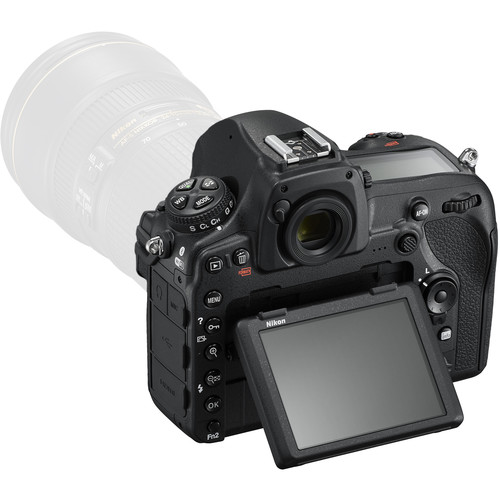 The Nikon D850 is official. It may be the very best DSLR ever built. The $3300 price tag is a really-good deal given all the features it packs, including 45+MP, 7/9 fps, 4K video, 8K timelapse, focus peaking, and lots more: .
The Nikon D850 is official. It may be the very best DSLR ever built. The $3300 price tag is a really-good deal given all the features it packs, including 45+MP, 7/9 fps, 4K video, 8K timelapse, focus peaking, and lots more: .
Submitted by David Cardinal on Wed, 08/09/2017 - 10:05
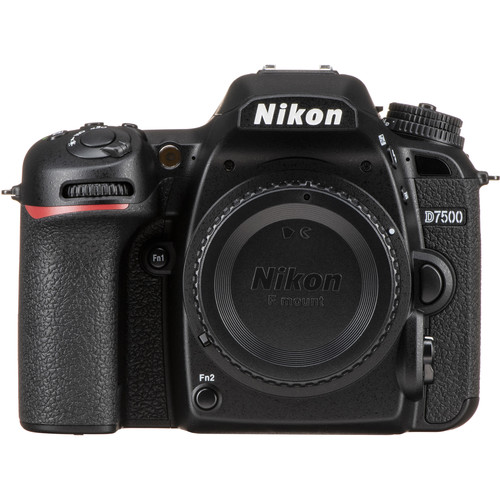 Like almost every pro Nikon shooter, I’m eagerly awaiting the new Nikon D850. In the meantime, I needed an updated backup camera for my . I wanted one good enough to use for “pro” work, but small and light enough that I could easily carry it in a messenger bag with my drone for field work. I’d already shot with the Nikon D500 and , which are both excellent cameras, but decided to be a little more adventurous and purchase the newer , that fits many of the features of the into a smaller, less-expensive, package.
Like almost every pro Nikon shooter, I’m eagerly awaiting the new Nikon D850. In the meantime, I needed an updated backup camera for my . I wanted one good enough to use for “pro” work, but small and light enough that I could easily carry it in a messenger bag with my drone for field work. I’d already shot with the Nikon D500 and , which are both excellent cameras, but decided to be a little more adventurous and purchase the newer , that fits many of the features of the into a smaller, less-expensive, package.
Submitted by David Cardinal on Wed, 06/14/2017 - 08:11
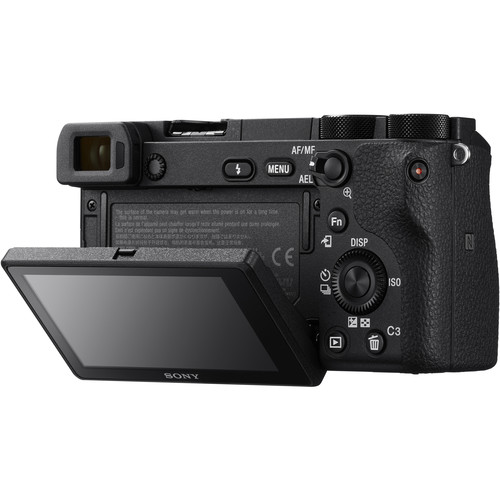 One after another Sony has been knocking down the barriers for those considering switching from full-size DSLRs to smaller, mirrorless, APS-C cameras. Better autofocus, high frame rates, and an increasing selection of lenses for its E-mount make the Sony a6000 family an excellent choice. Image quality is also highly competitive, as you’d expect from the company that makes sensors for much of the industry. One of the few remaining Achilles Heels has been its control and menu system, which have been hard to like. That was our biggest beef when we . With our recent field test of the newer we can confirm that Sony has made progress on the camera’s interface, but it is still more quirky than we’d like.
One after another Sony has been knocking down the barriers for those considering switching from full-size DSLRs to smaller, mirrorless, APS-C cameras. Better autofocus, high frame rates, and an increasing selection of lenses for its E-mount make the Sony a6000 family an excellent choice. Image quality is also highly competitive, as you’d expect from the company that makes sensors for much of the industry. One of the few remaining Achilles Heels has been its control and menu system, which have been hard to like. That was our biggest beef when we . With our recent field test of the newer we can confirm that Sony has made progress on the camera’s interface, but it is still more quirky than we’d like.
Submitted by David Cardinal on Mon, 06/12/2017 - 09:47
 I’ve written a lot about various kinds of remote cameras, especially for how they can be useful for security and monitoring. There are plenty of models for indoor use, and for outdoor use with wired power, but not very many choices for completely-wireless outdoor cameras. In particular, I wanted one that didn’t require a paid monthly subscription to a cloud service. So I was excited when the folks at Reolink contacted me about their new Argus model.
I’ve written a lot about various kinds of remote cameras, especially for how they can be useful for security and monitoring. There are plenty of models for indoor use, and for outdoor use with wired power, but not very many choices for completely-wireless outdoor cameras. In particular, I wanted one that didn’t require a paid monthly subscription to a cloud service. So I was excited when the folks at Reolink contacted me about their new Argus model.
Submitted by David Cardinal on Mon, 01/23/2017 - 10:03
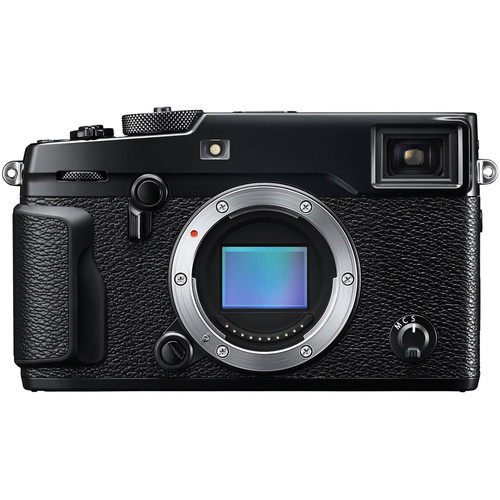 Right from the first look the screams retro, and reminds one of a Leica. Its square-shaped, solid-metal, body, with large control dials on top is a definite throwback. At first blush, so is the Rangefinder (which under the hood turns out to be a lot more than that). As with Leica, a carefully-curated selection of high-performance lenses complement the camera itself. The design may be retro, and a few of the features, but the Fuji X-Pro 2 packs a punch when it comes to the latest technology, features, and premium image quality. You won't be sacrificing anything in those areas by moving to one.
Right from the first look the screams retro, and reminds one of a Leica. Its square-shaped, solid-metal, body, with large control dials on top is a definite throwback. At first blush, so is the Rangefinder (which under the hood turns out to be a lot more than that). As with Leica, a carefully-curated selection of high-performance lenses complement the camera itself. The design may be retro, and a few of the features, but the Fuji X-Pro 2 packs a punch when it comes to the latest technology, features, and premium image quality. You won't be sacrificing anything in those areas by moving to one.
Submitted by David Cardinal on Wed, 10/12/2016 - 10:41
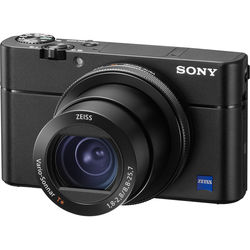 Sony has set the standard for high-end point-and-shoot cameras since it first introduced the Sony RX100 Mark I. Each year has brought additional features in the form of a new model, and this year is no exception. The adds the increasingly-popular Phase Detect AF, and a startlingly fast 24fps burst mode.
Sony has set the standard for high-end point-and-shoot cameras since it first introduced the Sony RX100 Mark I. Each year has brought additional features in the form of a new model, and this year is no exception. The adds the increasingly-popular Phase Detect AF, and a startlingly fast 24fps burst mode.
Submitted by David Cardinal on Mon, 06/20/2016 - 07:53
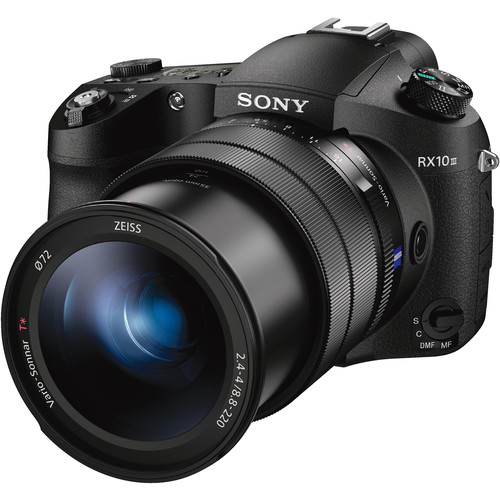 No one like carrying a lot of camera gear, or changing lenses. But for many of us it is a necessary evil to get the shots we want. But the question I get asked most is "I want a camera that does it all, but I don't want to carry several lenses or a big backpack or tripod, what should I buy?" The new is an excellent answer. With a 1-inch-format 20MP sensor, and a 24-600mm super-zoom lens from Zeiss, it takes remarkably good images for an all-in-one camera, and it does it across a massive focal length range. The big upgrade from the Mark II is an increase in zoom range from 200mm to 600mm at the long end (resulting in a slightly larger, and more-expensive, camera).
No one like carrying a lot of camera gear, or changing lenses. But for many of us it is a necessary evil to get the shots we want. But the question I get asked most is "I want a camera that does it all, but I don't want to carry several lenses or a big backpack or tripod, what should I buy?" The new is an excellent answer. With a 1-inch-format 20MP sensor, and a 24-600mm super-zoom lens from Zeiss, it takes remarkably good images for an all-in-one camera, and it does it across a massive focal length range. The big upgrade from the Mark II is an increase in zoom range from 200mm to 600mm at the long end (resulting in a slightly larger, and more-expensive, camera).
Submitted by David Cardinal on Wed, 04/13/2016 - 08:03
 I've spent a lot more time shooting with the new since my first look article, and the experience has reinforced my impressions -- both pro and con. On the pro side, the speed and image quality is really amazing. I covered multiple events at Nvidia's tech conference, in a variety of awful lighting conditions, and the camera performed flawlessly at ISOs up to 3200 (where I had Auto ISO set to top out). However, even after some customization of the interface, I found the controls inefficient, especially in dark rooms.
I've spent a lot more time shooting with the new since my first look article, and the experience has reinforced my impressions -- both pro and con. On the pro side, the speed and image quality is really amazing. I covered multiple events at Nvidia's tech conference, in a variety of awful lighting conditions, and the camera performed flawlessly at ISOs up to 3200 (where I had Auto ISO set to top out). However, even after some customization of the interface, I found the controls inefficient, especially in dark rooms.
Submitted by David Cardinal on Tue, 03/29/2016 - 10:30
 Almost every photographer I know wishes their camera was smaller and lighter. But of course they don’t want to give up speed or features. This is particularly true with those of us clinging to our DSLRs, but constantly eyeing the mirrorless category for new models, as they creep up on our larger cameras in capability. With the launch of its , yet another set of barriers to moving to mirrorless have come down. I’ve been shooting with one since its launch and while I’ll be doing a more-detailed review, I wanted to get my preliminary thoughts out.
Almost every photographer I know wishes their camera was smaller and lighter. But of course they don’t want to give up speed or features. This is particularly true with those of us clinging to our DSLRs, but constantly eyeing the mirrorless category for new models, as they creep up on our larger cameras in capability. With the launch of its , yet another set of barriers to moving to mirrorless have come down. I’ve been shooting with one since its launch and while I’ll be doing a more-detailed review, I wanted to get my preliminary thoughts out.
Submitted by David Cardinal on Mon, 07/06/2015 - 07:14
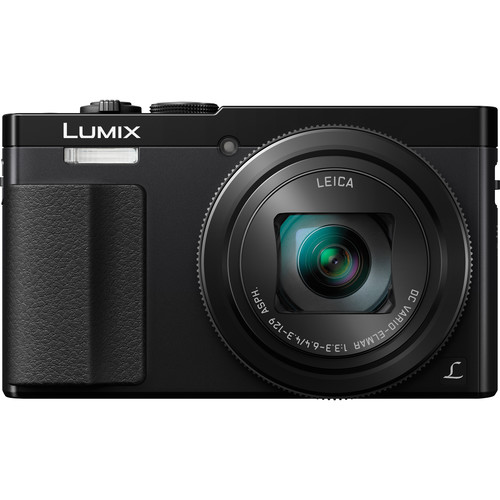 No segment of the camera market has improved as quickly as the superzoom point and shoots. Originally more of a gimmick than a real tool, these tiny models are now quite capable of producing very usable images. However, to get their massive zoom ranges crammed into a few-ounce body means using a fairly small sensor. Likewise, electronics are limted by their weight and low price, so exposure, focus, and the EVF also suffer. To see what the new models are capable of, I brought along the new with me to Africa on safari to field test (in addition to my primary DSLR of course). For the most part I was pleasantly surprised with the results, but it certainly had some drawbacks as well…
No segment of the camera market has improved as quickly as the superzoom point and shoots. Originally more of a gimmick than a real tool, these tiny models are now quite capable of producing very usable images. However, to get their massive zoom ranges crammed into a few-ounce body means using a fairly small sensor. Likewise, electronics are limted by their weight and low price, so exposure, focus, and the EVF also suffer. To see what the new models are capable of, I brought along the new with me to Africa on safari to field test (in addition to my primary DSLR of course). For the most part I was pleasantly surprised with the results, but it certainly had some drawbacks as well…
Submitted by David Cardinal on Mon, 03/16/2015 - 08:47
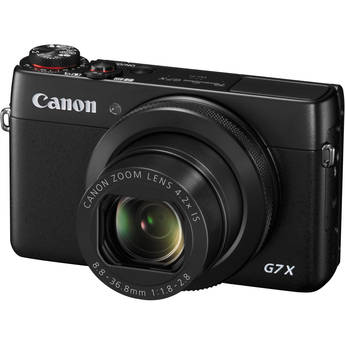 Sony brought the premium compact camera segment back to life with its 1-inch sensor RX100, but its rivals haven't left it have free run of the market. Panasonic's Lumix LX100 has become a worthy competitor, although its larger size and greater weight make it a less attractive alternative than Sony's latest version, the RX100 III. Now Canon has come out with a model that combines the popular interface from its "S-series" point and shoots with a few more manual controls and a 1-inch, 20MP sensor, to create the Canon G7 X. It has the best overall image quality ratings of any camera in its class, so we got one to put through its paces…
Sony brought the premium compact camera segment back to life with its 1-inch sensor RX100, but its rivals haven't left it have free run of the market. Panasonic's Lumix LX100 has become a worthy competitor, although its larger size and greater weight make it a less attractive alternative than Sony's latest version, the RX100 III. Now Canon has come out with a model that combines the popular interface from its "S-series" point and shoots with a few more manual controls and a 1-inch, 20MP sensor, to create the Canon G7 X. It has the best overall image quality ratings of any camera in its class, so we got one to put through its paces…
Submitted by David Cardinal on Thu, 02/26/2015 - 10:59
It is a truism in photography that the best camera is the one you have with you. In that spirit, whenever I’m asked for advice on what new camera someone should buy, I try to figure out not just their budget and needs, but how much camera they’re really likely to be willing to carry around. For many, it isn’t obvious what they gain by “trading-up” to a larger, heavier, and more-expensive model. While it is always dangerous to generalize, there are certain rules of thumb about the pros and cons of various types of current-model digital cameras. We’ll help you sort through your options…
Submitted by David Cardinal on Tue, 12/23/2014 - 08:59
I’ve always lusted after a Leica Rangefinder camera. They were, and for some still are, the epitome of image quality and style. However, by the time I had enough money to even think seriously about buying one, much of my photography involved wildlife and sports – so my photo budget went to big cameras, bigger lenses, and travel to places where I could find my subjects. So it was with great excitement that I started my fieldtest of Panasonic’s with Leica lens…
Submitted by David Cardinal on Thu, 08/21/2014 - 09:30
For the past few weeks I’ve been shooting with a in a variety of situations. I wasn’t enough of a fan of the D800 to purchase one, so I didn’t expect to want to purchase my review either. However, Nikon has done enough to improve the camera that it is now a winner for me, and this one will likely be staying right here in my camera bag. Here’s why…
Pages

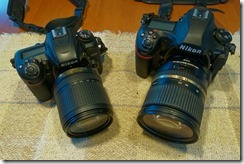
 The Nikon D850 is official. It may be the very best DSLR ever built. The $3300 price tag is a really-good deal given all the features it packs, including 45+MP, 7/9 fps, 4K video, 8K timelapse, focus peaking, and lots more:
The Nikon D850 is official. It may be the very best DSLR ever built. The $3300 price tag is a really-good deal given all the features it packs, including 45+MP, 7/9 fps, 4K video, 8K timelapse, focus peaking, and lots more:  Like almost every pro Nikon shooter, I’m eagerly awaiting the new Nikon D850. In the meantime, I needed an updated backup camera for my
Like almost every pro Nikon shooter, I’m eagerly awaiting the new Nikon D850. In the meantime, I needed an updated backup camera for my  One after another Sony has been knocking down the barriers for those considering switching from full-size DSLRs to smaller, mirrorless, APS-C cameras. Better autofocus, high frame rates, and an increasing selection of lenses for its E-mount make the Sony a6000 family an excellent choice. Image quality is also highly competitive, as you’d expect from the company that makes sensors for much of the industry. One of the few remaining Achilles Heels has been its control and menu system, which have been hard to like. That was our biggest beef when we
One after another Sony has been knocking down the barriers for those considering switching from full-size DSLRs to smaller, mirrorless, APS-C cameras. Better autofocus, high frame rates, and an increasing selection of lenses for its E-mount make the Sony a6000 family an excellent choice. Image quality is also highly competitive, as you’d expect from the company that makes sensors for much of the industry. One of the few remaining Achilles Heels has been its control and menu system, which have been hard to like. That was our biggest beef when we  I’ve written a lot about various kinds of remote cameras, especially for how they can be useful for security and monitoring. There are plenty of models for indoor use, and for outdoor use with wired power, but not very many choices for completely-wireless outdoor cameras. In particular, I wanted one that didn’t require a paid monthly subscription to a cloud service. So I was excited when the folks at Reolink contacted me about their new Argus model.
I’ve written a lot about various kinds of remote cameras, especially for how they can be useful for security and monitoring. There are plenty of models for indoor use, and for outdoor use with wired power, but not very many choices for completely-wireless outdoor cameras. In particular, I wanted one that didn’t require a paid monthly subscription to a cloud service. So I was excited when the folks at Reolink contacted me about their new Argus model. Right from the first look the
Right from the first look the  Sony has set the standard for high-end point-and-shoot cameras since it first introduced the Sony RX100 Mark I. Each year has brought additional features in the form of a new model, and this year is no exception. The
Sony has set the standard for high-end point-and-shoot cameras since it first introduced the Sony RX100 Mark I. Each year has brought additional features in the form of a new model, and this year is no exception. The  No one like carrying a lot of camera gear, or changing lenses. But for many of us it is a necessary evil to get the shots we want. But the question I get asked most is "I want a camera that does it all, but I don't want to carry several lenses or a big backpack or tripod, what should I buy?" The new
No one like carrying a lot of camera gear, or changing lenses. But for many of us it is a necessary evil to get the shots we want. But the question I get asked most is "I want a camera that does it all, but I don't want to carry several lenses or a big backpack or tripod, what should I buy?" The new  I've spent a lot more time shooting with the new
I've spent a lot more time shooting with the new  Almost every photographer I know wishes their camera was smaller and lighter. But of course they don’t want to give up speed or features. This is particularly true with those of us clinging to our DSLRs, but constantly eyeing the mirrorless category for new models, as they creep up on our larger cameras in capability. With the launch of its
Almost every photographer I know wishes their camera was smaller and lighter. But of course they don’t want to give up speed or features. This is particularly true with those of us clinging to our DSLRs, but constantly eyeing the mirrorless category for new models, as they creep up on our larger cameras in capability. With the launch of its  No segment of the camera market has improved as quickly as the superzoom point and shoots. Originally more of a gimmick than a real tool, these tiny models are now quite capable of producing very usable images. However, to get their massive zoom ranges crammed into a few-ounce body means using a fairly small sensor. Likewise, electronics are limted by their weight and low price, so exposure, focus, and the EVF also suffer. To see what the new models are capable of, I brought along the new
No segment of the camera market has improved as quickly as the superzoom point and shoots. Originally more of a gimmick than a real tool, these tiny models are now quite capable of producing very usable images. However, to get their massive zoom ranges crammed into a few-ounce body means using a fairly small sensor. Likewise, electronics are limted by their weight and low price, so exposure, focus, and the EVF also suffer. To see what the new models are capable of, I brought along the new  Sony brought the premium compact camera segment back to life with its 1-inch sensor RX100, but its rivals haven't left it have free run of the market. Panasonic's Lumix LX100 has become a worthy competitor, although its larger size and greater weight make it a less attractive alternative than Sony's latest version, the RX100 III. Now Canon has come out with a model that combines the popular interface from its "S-series" point and shoots with a few more manual controls and a 1-inch, 20MP sensor, to create the Canon G7 X. It has the best overall image quality ratings of any camera in its class, so we got one to put through its paces…
Sony brought the premium compact camera segment back to life with its 1-inch sensor RX100, but its rivals haven't left it have free run of the market. Panasonic's Lumix LX100 has become a worthy competitor, although its larger size and greater weight make it a less attractive alternative than Sony's latest version, the RX100 III. Now Canon has come out with a model that combines the popular interface from its "S-series" point and shoots with a few more manual controls and a 1-inch, 20MP sensor, to create the Canon G7 X. It has the best overall image quality ratings of any camera in its class, so we got one to put through its paces…

